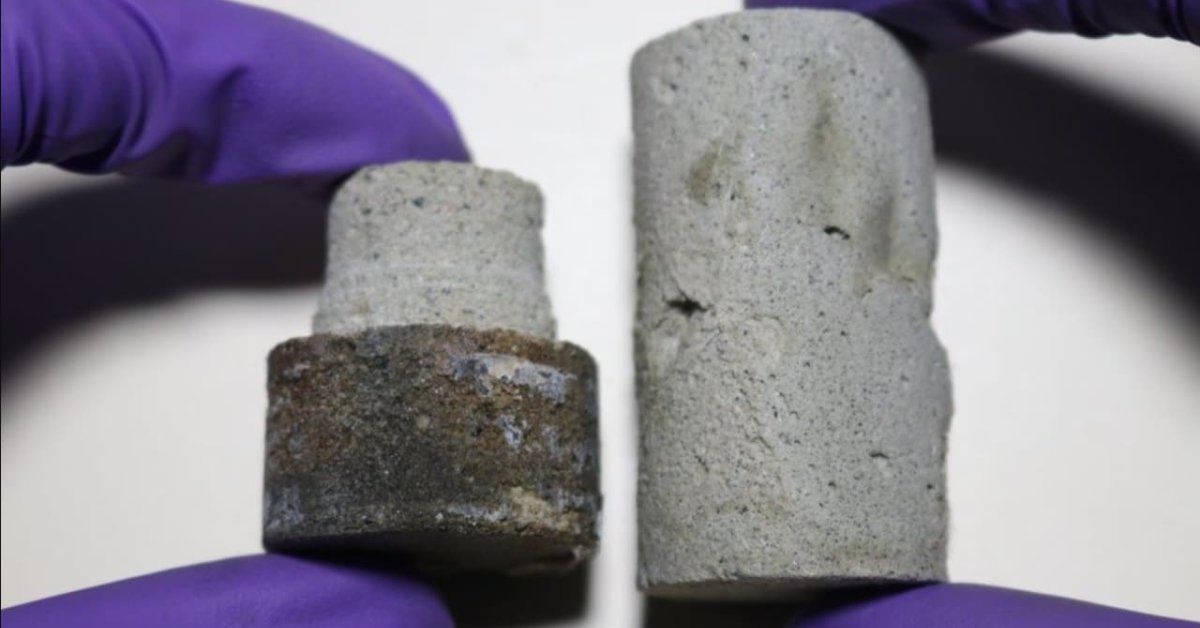IISc & ISRO Scientists Develop Space Bricks For Habitation On The Moon
Karamchand Rameshwar - Aug 19, 2020

Indian scientists at the IISc and ISRO have just developed "space bricks" that can be very useful in constructing buildings on the moon.
- Scientists Want To Send 6.7 Million Samples, Including Sperm, To The Moon
- Russia Will Build A Lunar Space Station With China Because It's Done With NASA
- SpaceX Beats ISRO By Launching The Most Satellites In A Vehicle, 143
Research scientists at the Indian Space Research Organization (ISRO) and Indian Institute of Science (IISc) have just invented a process that can make space bricks on the moon, eventually allowing astronauts to create load-bearing structures on the lunar surface. This method requires mixing the lunar soil with bacteria, urea from human urine, and guar gum to make the space bricks.

"The process involves extracting lunar soil and using bacteria and guar beans to harden it (soil) into brick-like structures for habitation on the moon in the future," said a researcher on the project.
The invention of the space bricks can be very useful in making human bases on the moon. Since it is very costly to transport construction materials to the moon, the invention of space bricks could lower the cost of such missions drastically.
"As the cost of sending 1 pound of material to outer space is currently Rs 7.5 lakh, the process our scientists developed reduced it (cost) as urea, sourced from human urine and lunar soil will be used as raw materials for the construction on the moon's surface," said Aloke Kumar - the institute's assistant professor in mechanical engineering.
The scientists at ISRO and IISC have come up with this unique solution by mixing the bacteria with a simulant of lunar soil, then adding calcium and urea to the mixture. For structure, they used guar gum, which is extracted from guar beans, and kept the mixture in incubation for a couple of days, until it possessed significant machinability and strength.
“Our material could be fabricated into any freeform shape using a simple lathe. This is advantageous because this circumvents the need for specialised moulds – a common problem when trying to make a variety of shapes by casting,” said Koushik Viswanathan, assistant professor in the Department of Mechanical Engineering, IISc and an author of the study.
>>> 10 Breathtaking Views Of Earth That Can Only Be Seen From Space
Featured Stories

Features - Jul 01, 2025
What Are The Fastest Passenger Vehicles Ever Created?

Features - Jun 25, 2025
Japan Hydrogen Breakthrough: Scientists Crack the Clean Energy Code with...

ICT News - Jun 25, 2025
AI Intimidation Tactics: CEOs Turn Flawed Technology Into Employee Fear Machine

Review - Jun 25, 2025
Windows 11 Problems: Is Microsoft's "Best" OS Actually Getting Worse?

Features - Jun 22, 2025
Telegram Founder Pavel Durov Plans to Split $14 Billion Fortune Among 106 Children

ICT News - Jun 22, 2025
Neuralink Telepathy Chip Enables Quadriplegic Rob Greiner to Control Games with...

Features - Jun 21, 2025
This Over $100 Bottle Has Nothing But Fresh Air Inside

Features - Jun 18, 2025
Best Mobile VPN Apps for Gaming 2025: Complete Guide

Features - Jun 18, 2025
A Math Formula Tells Us How Long Everything Will Live

Features - Jun 16, 2025
Comments
Sort by Newest | Popular